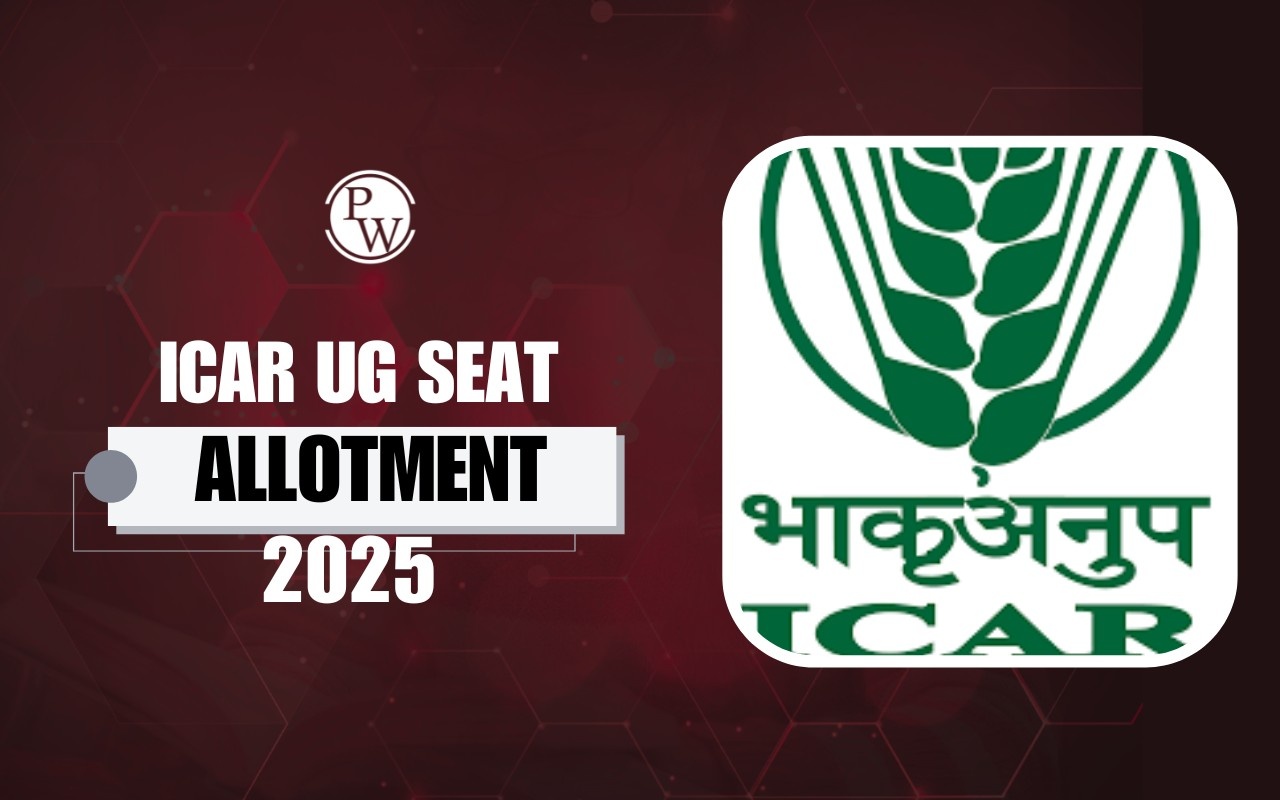

CUET vs CUCET – What's the Difference? : Many students get confused between CUET and CUCET while preparing for university admissions. Both exams are related to higher education in India and are conducted for UG, PG, or research programs. Understanding the CUET vs CUCET differences can help students choose the right exam based on their goals.
CUET is a national-level exam for admission to central and other participating universities. On the other hand, CUCET was the previous version of this exam, conducted for a smaller number of universities. Knowing how these exams differ from each other is important for students planning their future studies.
CUET vs CUCET- What's the Difference?
Many students come across this question, “CUET vs CUCET – What's the Difference?” while exploring entrance exams for central universities. Since both are related to university admissions, it is common to get confused between them. However, there is a key difference that sets them apart. CUCET, previously known as the Central Universities Common Entrance Test, was conducted for a limited number of universities. Later, the National Testing Agency (NTA) took over its administration and restructured it as CUET (Common University Entrance Test), expanding its reach to more institutions.
While both exams serve as a gateway for various undergraduate, postgraduate, and research programs, CUET is now the standardized entrance exam for central and other participating universities. Let’s learn about CUET vs CUCET one by one.
What is CUCET? An Overview
The Central Universities Common Entrance Test (CUCET) was introduced in 2010 to streamline the admission process for students applying to various programs at central universities in India. Initially, it was conducted by the Central University of Rajasthan and was limited to just seven universities. Over the years, the number of participating universities gradually expanded, reaching twelve by 2020.
-
CUCET served as the entrance exam for undergraduate, integrated, postgraduate, and research programs across these central universities.
-
In 2021, the responsibility of conducting the exam was transferred to the National Testing Agency (NTA), with the exam undergoing certain changes to further improve its reach and efficiency. The restructured exam later became known as CUET (Common University Entrance Test).
What is CUET? An Overview
CUET, or Common University Entrance Test, is a national-level entrance exam and was introduced as a part of the National Education Policy 2020 and serves as a standardized platform for both undergraduate and postgraduate admissions.
-
CUET replaced the earlier CUCET (Central Universities Common Entrance Test) and has made it mandatory for all 44 central universities to participate in the process.
-
The exam is conducted by the National Testing Agency (NTA), which is responsible for ensuring a smooth and fair admission process for students across the country.
As we move forward into the CUET 2025 examination cycle, students planning to apply this year will be able to begin the registration process in February 2025 (expectedly). With several changes to the structure and subjects of the exam, it’s important for students to carefully review the CUET 2025 Eligibility Criteria and the subject options before submitting their application forms.
The CUET UG 2025 exam is scheduled to take place in May or June and will be conducted in a more than 15-day window in Computer-Based Test (CBT) mode. Over 200 universities, including central, private, and deemed institutions, will accept CUET scores for admission to various programs.
CUET vs CUCET – Understanding Eligibility Criteria Difference
The eligibility criteria for CUET and CUCET have some key differences, mainly because CUET is the updated version of CUCET. Let’s look at the eligibility requirements for both exams here:
CUCET Eligibility Criteria
CUCET had basic eligibility rules. For general category students, a minimum of 50% marks in Class 12 were required. Students from SC/ST categories needed at least 45%. Furthermore, the subjects studied in Class 12 were important, with students needing specific subjects like Physics, Chemistry, Mathematics, or Biology based on the course they were applying for.
CUET Eligibility Criteria (2025)
For CUET 2025, the eligibility is a bit more flexible. To apply for CUET UG, students need to have completed Class 12th. The minimum required percentage varies by university and course, but generally, general category students need 50%, while students belonging to the SC/ST category need 45%.
One important change is that students who are currently in Class 12 (appearing for exams in 2025) can also apply, as long as they can provide their passing certificate during counseling. There is no upper age limit for CUET, which means anyone can apply as long as they meet the educational requirements.
Nationality and Number of Attempts
Both CUET and CUCET have nationality rules. For CUET 2025, Indian citizens, as well as nationals from countries like Nepal, Bhutan, Pakistan, and others who are permanently settled in India, are eligible. CUCET had similar rules for foreign nationals.
As for the number of attempts, there is no limit to how many times students can take the CUET exam, as long as they meet the eligibility criteria each time. CUCET had no specific rules about attempts either, but students could take it multiple times if they met the requirements.
CUET vs CUCET- Difference in Exam Pattern
As previously discussed, CUET is the revamped version of CUCET, and although both exams serve similar purposes, which are providing entrance to central universities, there are key differences in their exam patterns. Find out the CUET vs CUCET exam pattern comparison, along with the new updates for CUET 2025 below:
CUET vs CUCET: Question Paper Type
-
CUET : The CUET UG exam follows the MCQ (Multiple Choice Questions) format for all sections.
-
CUCET: CUCET also used MCQs, but it had fewer sections compared to CUET.
CUET vs CUCET: Exam Mode
-
CUET : The CUET exam will be conducted entirely in Computer-Based Test (CBT) mode. This shift allows for a more streamlined and standardized exam process across all centers.
- CUCET: In contrast, CUCET was traditionally held offline, where candidates marked their answers on an OMR sheet.
CUET vs CUCET: Medium of Exam
-
CUET: For CUET 2025, candidates can choose to take the exam in any of 13 languages, providing more accessibility to students across the country.
-
CUCET: The CUCET exam was conducted only in English.
CUET vs CUCET: Subjects and Flexibility
-
CUET 2025: One of the most notable updates for CUET 2025 is the reduction of available subjects from 63 to 37, which includes 13 languages, 23 domain subjects, and a general test. Students can now choose 5 domain subjects, down from the previous limit of 6. Additionally, there is more flexibility in subject selection, allowing students to pick subjects not necessarily studied in Class 12.
-
CUCET: The CUCET exam offered a wider range of subjects but did not have the same flexibility in subject selection.
CUET vs CUCET: Total Questions and Marks
-
CUET UG: The new CUET 2025 format introduces 4 sections for the UG exam. The total number of questions varies by section, with 50 questions in Sections IA, IB, and II, and 75 questions in Section III. The total marks for each section are also divided accordingly, with Section III carrying the most marks (300).
-
CUCET: CUCET had 2 sections with 100 questions in total, with fewer marks allocated compared to CUET.
CUET vs CUCET: Duration of Examination:
-
CUET 2025: The duration for each subject is now standardized to 1 hour (60 minutes), with each section of CUET UG having its own time limit.
-
CUCET: The CUCET exam lasted for 2 hours in total, covering all sections.
CUET vs CUCET: Marking Scheme:
-
CUET UG: The CUET 2025 exam follows a marking scheme of 5 marks for every correct answer, with 1 mark deducted for each incorrect answer.
-
CUCET: The CUCET exam awarded 1 mark for every correct answer and deducted 0.25 marks for wrong answers.
What is the Difference Between CUCET and CUET?- Key Points to Note
CUET (Central University Entrance Test) and CUCET (Central University Common Entrance Test) are both entrance exams for admission to central universities in India. However, there are several key differences between the two exams that aspirants must know:
-
Full Form : CUET stands for Central University Entrance Test, while CUCET stands for Central University Common Entrance Test. The names reflect similar purposes, but CUET is the updated version.
-
Conducting Body : The National Testing Agency (NTA) conducts CUET, while CUCET was previously conducted by the Central University of Rajasthan.
-
Establishment Year: CUET was introduced in 2022 as a revamped version of CUCET, while CUCET was established in 2010 and had been in use for over a decade before CUET replaced it.
-
Participating Universities: CUET is accepted by 44 central universities, and it has expanded to include over 250 participating universities across India. In contrast, CUCET was initially used by 12 central universities.
-
Exam Level : Both CUET and CUCET are national-level exams, meaning they are recognized across the country for admission to central universities.
-
Courses Offered : CUET offers admission to Undergraduate (UG), Integrated courses, Postgraduate (PG), and Research programs. Similarly, CUCET also provided admission to UG, integrated, PG, and research programs.
-
Eligibility Criteria : The eligibility criteria for CUET are set by the National Testing Agency (NTA) and may vary depending on the university and course. On the other hand, CUCET's eligibility criteria were determined by each Central University individually.
-
Application Process : The application process for CUET is online, and candidates are required to submit their applications through the official website. Similarly, the application for CUCET was also online, allowing students to apply digitally.
-
Mode of Exam : CUET is conducted in online mode, specifically in Computer-Based Test (CBT) format, providing a more modern approach. CUCET, however, was conducted in offline mode using pen and paper (OMR) sheets.
- Medium of Exam: CUET is conducted in 13 languages, which allows a broader range of students from different regions to appear for the exam in their preferred language. In comparison, CUCET was conducted only in English, limiting the language options for students.
Study Material For CUET 2025 Preparation
Comprehensive guides, practice papers, mock tests, and video lectures designed to help students excel in the CUET 2025 exam.
| Study Material For CUET 2025 Preparation |
| Checkout CUET Books from PW Store |
| Checkout Question Banks from PW Store |
| Checkout Mock Test from PW Store |












